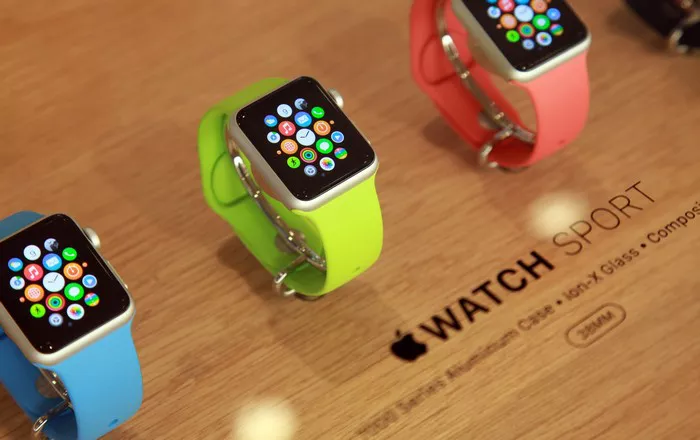The Apple Watch Series 10 marks a decade of innovation, bringing with it subtle refinements rather than groundbreaking changes. Despite an updated design that’s thinner, lighter, and equipped with a larger screen, the new smartwatch is largely a continuation of its predecessor, making it an incremental step in the evolution of Apple’s wearable technology.
At first glance, the changes may seem minor, but they make a notable difference in the user experience. Apple has maintained the same sleek, familiar design, but significant internal adjustments have allowed the Series 10 to become thinner and lighter than previous models. The new iteration is available in both aluminium and titanium, with prices starting at £399 ($399/A$649), and it comes in 42mm and 46mm sizes, replacing the previous 41mm and 45mm configurations.
Though the case size has only increased by a millimeter, the reduction in thickness and weight—by 1mm and 2g, respectively—has a tangible impact. The slimmer design fits more snugly on the wrist, making it more comfortable to wear, particularly when sliding under shirt cuffs or during intense physical activity. The Series 10 feels lighter and less bulky, a subtle but appreciated upgrade.
Larger, Brighter Screen for Easier Viewing
The Series 10 introduces a larger display, with both sizes offering up to 9% more screen real estate than the past three generations, and a substantial 30% increase over the 2020 Series 6. The 46mm version features the largest screen ever fitted to an Apple Watch, even surpassing the Ultra 2. This larger display makes on-screen buttons easier to tap, offers more text on-screen, and benefits those with visual impairments by providing a larger text option without sacrificing functionality. Additionally, the screen is brighter when viewed from an angle, ensuring that the time is always legible, even during busy moments.
Improved Battery Life and Faster Charging
Battery life has also seen a slight improvement, with the 46mm Series 10 lasting approximately 48 hours on a full charge, excluding exercise. This slight boost means the watch can almost make it through a weekend without needing a recharge—though it still requires charging every couple of days. The Series 10 also boasts faster charging speeds, reaching 80% capacity in just 30 minutes and a full charge in under an hour, which makes top-ups during short breaks more convenient.
Updated WatchOS 11: New Features for Better Usability
The Series 10 runs on watchOS 11, the latest iteration of Apple’s operating system. This update brings several enhancements, including a new Translate app, improved smart stacks for widgets, and an expanded double-tap gesture for hands-free navigation. A new depth gauge and water temperature sensor have been added for those who engage in water activities, capable of measuring dives up to 6 meters. The updated workout app also provides insights into your training load, offering valuable feedback on whether your exercise intensity is optimal.
For those concerned with their health, the Series 10 introduces sleep apnea detection, which analyzes nighttime breathing patterns on a monthly basis, alerting users to potential issues. Additionally, the Vitals app tracks metrics like heart rate and sleep duration on a nightly basis, providing alerts when significant changes occur compared to your baseline.
Sustainability Efforts and Repairability Concerns
Apple has made strides in sustainability with the Series 10, incorporating over 30% recycled materials such as aluminum, copper, glass, gold, and more. The company claims the battery will last for more than 1,000 full charge cycles, retaining at least 80% of its original capacity. Battery replacements are available for £95, but the Series 10 has received a less-than-ideal repairability score of 3/10 from iFixit, with repairs costing anywhere from £309 to £409 depending on the model.
Pricing and Competition
The Apple Watch Series 10 starts at £399 ($399/A$649) for the aluminium model and goes up to £499 ($499/A$799) for the titanium version with 4G connectivity. Comparatively, the Apple Watch Ultra 2 is priced at £799, while the Apple Watch SE is available for £219, and competitors like the Google Pixel Watch 3 and Samsung Galaxy Watch 7 are priced at £279 and £289, respectively.
Final Verdict: A Refined, but Familiar Smartwatch
While the Apple Watch Series 10 isn’t the game-changing redesign some may have hoped for, it is, without a doubt, the most refined model Apple has produced. The sleeker profile, larger display, and reduced weight improve day-to-day usability, especially for those upgrading from older models like the Series 5 or 6. However, for those coming from more recent versions, the differences may feel incremental at best.
Still, the Series 10 remains the best smartwatch for iPhone users, offering excellent battery life, top-tier health and fitness tracking, and the usual Apple excellence in areas like payments and ecosystem integration. It’s not revolutionary, but it continues to set the standard for smartwatches in its class.
Pros:
- Impressive always-on screen
- Slimmer and more comfortable design
- Excellent haptic feedback
- Comprehensive health and activity tracking
- Fast charging
- Long-term software support
- Environmentally conscious materials
- Compatible with older watch straps
Cons:
- Pricey
- Exclusively works with iPhones
- No blood oxygen readings available in the U.S.
- Lack of third-party watch faces
- Aesthetic changes are minimal compared to prior models
In conclusion, the Apple Watch Series 10 represents a well-executed iteration of an already great smartwatch, offering minor refinements that make a big difference in everyday use—without straying far from the design formula that’s worked so well for Apple in the past decade.
Related Topics:
How To Factory Reset Apple Watch 3

